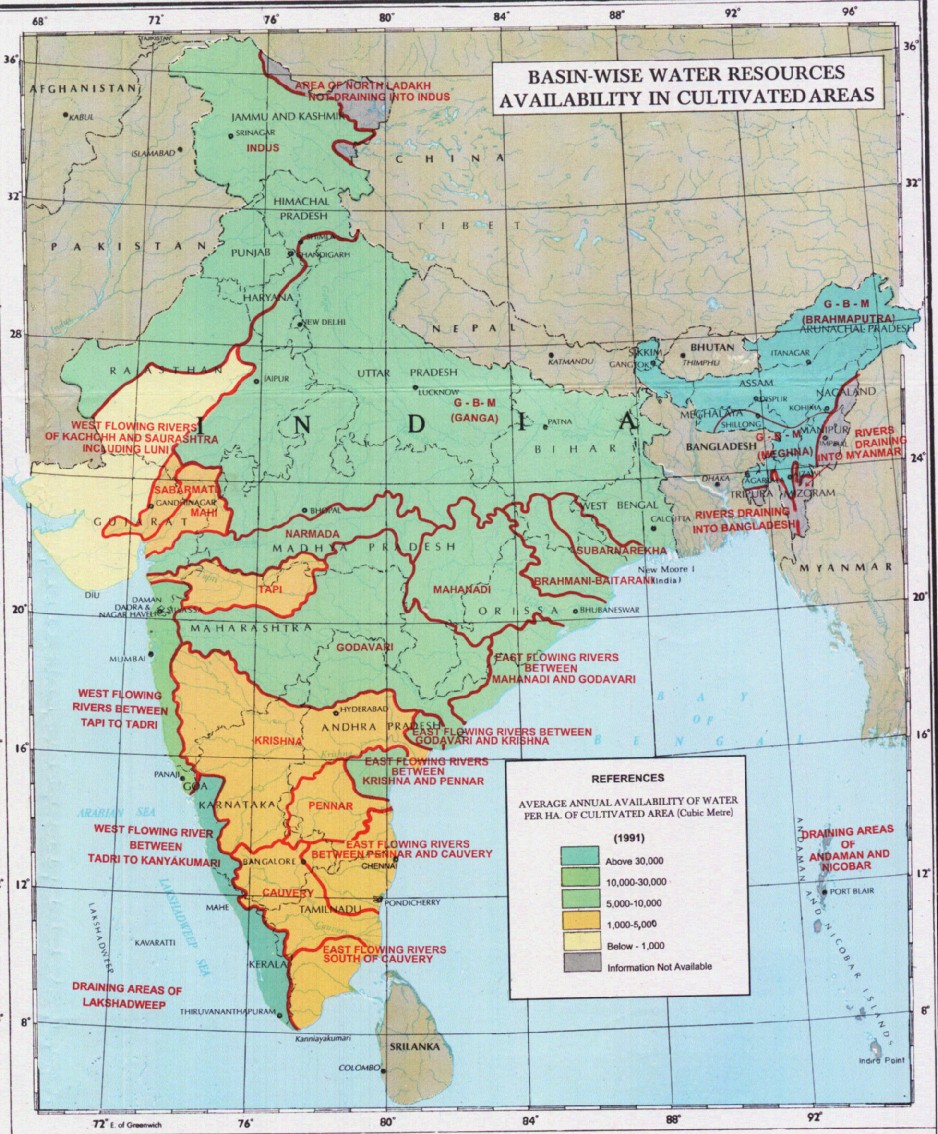Rainfall and other forms of Precipitation
Technologies for lake restoration: A paper from Helmut Klapper on water quality and restoration of lakes
Posted on 20 Aug, 2009 03:46 PMDownload this guide to technologies which can assist you in your goal to restore lakes.
Revival of ancient water tanks in India: Case studies from Karnataka and Tamilnadu
Posted on 20 Aug, 2009 03:26 PMCenturies old dried up water tanks have been revived with the combined efforts of the local community and the authorities.
Map: Location of water resource projects across river basins in India
Posted on 20 Aug, 2009 03:23 PMThe map indicates that across the main 19 river basins of the country, water resource projects with a total live storage of 174 BCM (Billion Cubic Metres) have been completed, 75 BCM are ongoing, and 132 BCM are being planned.
Annual average availability of water for agriculture in India as of 1991
Posted on 20 Aug, 2009 02:50 PM
Rashtrita Jal Chetna Yatra: Efforts of Tarun Bharat Sangh and Rajendar Singh in addressing water related concerns across the country
Posted on 20 Aug, 2009 02:20 PMTarun Bharat Sangh and Rajendar Singh started a massive campaign to spread awareness of traditional water harvesting structures in order to restore the water resources of arid Rajasthan. The aim was to popularize the use of such traditional structures across the country.
Collection of articles on climate change with special reference to India
Posted on 20 Aug, 2009 12:36 PMClimage Change, Indias perceptions, positions, policies and possibilities, written by Jyoti K Parikh and Kirit Parikh, Indira Gandhi
Chennai metropolitan area's water woes: CMWSSB's plans for the future
Posted on 19 Aug, 2009 04:01 PMCMWSSB or Metro Water was established in 1978 and serves 180 sq kms of area and 5.5 million population.
Physiographic rainfall variations across India: Thematic map from the Indian Institute of Tropical Meteorology
Posted on 19 Aug, 2009 03:59 PMThe map shows that there is a decreasing trend of rainfall over most of peninsular India (barring Maharashtra) including the western part of the Gangetic plain and the north eastern states apart from Assam.
An increasing trend of rainfall has been observed for the eastern part of the Gangetic plain, Assam, Telengana and all coastal regions of the country.
Map depicting areas prone to flooding in India
Posted on 19 Aug, 2009 03:48 PMThis map shows the regions in the country that are regularly affected by floods.
The major flood prone regions are Punjab, Haryana, most of the Gangetic plains including Uttar Pradesh, North Bihar and West Bengal, the Brahmaputra valley, coastal Andhra Pradesh and Orissa, and South Gujarat.
Rainwater harvesting basics: Filtering the water before storage and use
Posted on 19 Aug, 2009 03:29 PMOverview
Rainwater is amongst the purest water one can get distilled as it is by the sun. However, in a rainwater harvesting system, the water comes in contact with several surfaces, such as the roof or gutters. Its flow becomes possibly mixed with leaves or dust.





